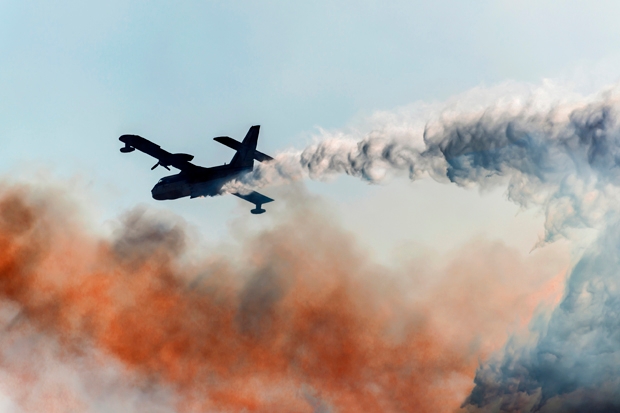I sat down at the metal table on the shaded terrace to write a column. In front, ripening vines receding to oak-clad hills; barren mountain tops beyond. To the right, the spacious vista was abruptly curtailed by the diagonal outline of a steep hill of oak and pine which descended to a dried-up river bed at the foot of the hill on which our isolated shack was perched. Ten o’clock in the morning and it was already 34°C. The wall-of-sound crepitations of the cigales sounded louder than ever. A donkey half a mile away brayed dementedly, railing against his lot. I sipped my coffee and wondered what I should write about.
As I sipped and wondered, a cloud — huge, white, and blooming like a time-lapse photography flower — unfurled majestically above the hillcrest. Odd, I thought. The weather forecast told only of cloudless skies for the foreseeable future. The phone rang. Larry, our nearest neighbour. Larry lives higher up the hill, about half a mile away. Were we aware that a bush fire was burning out of control and heading towards the house? From where he was sitting, he said, we ought to think about leaving.
I replaced the receiver and looked again at the cloud. Now it was grey, red, black and orange as well as white. It filled five eighths of the sky. You could smell it. The view beyond the vines was blotted out. Suddenly, the approaching din and thunder of aircraft. From behind the house, four orange and red propeller-driven aircraft — the fire-fighting Canadairs — passed in single file 200 feet above the roof, throwing sharp crucible shadows on the terrace tiles. Pregnant with lake water and ungainly, the planes wheeled and banked as they disappeared over the hillcrest into the smoke.









Comments
Join the debate for just £1 a month
Be part of the conversation with other Spectator readers by getting your first three months for £3.
UNLOCK ACCESS Just £1 a monthAlready a subscriber? Log in